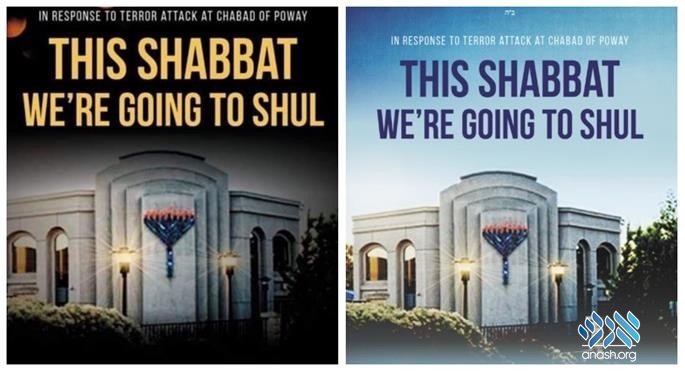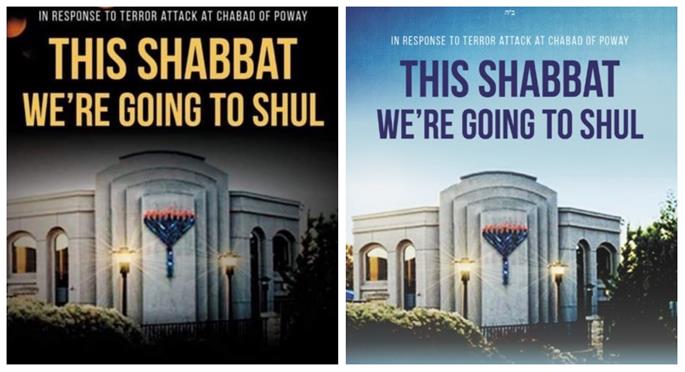ב׳ אייר ה׳תשע״ט | May 6, 2019
One Flyer, Two Opposing Messages
Rabbi Mendy Kaminker shares why he almost refrained from joining the #ShareShabbat campaign

Rabbi Mendy Kaminker shares why he almost refrained from joining the #ShareShabbat campaign
By Mendy Kaminker for Chabad.org
I really wanted to do it, because Rabbi Yisroel Goldstein, the rabbi-turned-hero of Poway had asked.
But I simply couldn’t.
After a gunman attacked his Chabad house, murdered a congregant and injured him and two others, the rabbi inspired the nation. With hands in casts and visibly in pain, he spoke out:
“I’m encouraging and I’m pleading with every single Jew that sees this appeal: This weekend, go to your own respective synagogues, fill up the ballrooms, fill up the sanctuaries, let them see that nothing will take us down, let them see that this is not going to deter us; it’s not going to scare us.”
His words spread fast, and #ShareShabbat was born.
Around the world, hundreds of thousands of Jews are going to light Shabbat candles on Friday and show up to their local synagogues for Shabbat prayers.
Though nestled across the country, I felt the urgent importance for the community here in Hackensack, N.J., to take part, to show unity with our fellow Jews in Poway.
So I began looking for a nice flyer. To share a little secret with you, almost every Chabademissary is connected to multiple networking groups, email exchanges, Facebook and Whatsapp groups where ideas and resources are shared.
So I was delighted when a fellow Chabad rabbi offered to customize for us a flyer he created. Within a few minutes, I had the file ready. It contained all the elements I could ask for: a nice picture of the Chabad Center of Poway, bold text with the location and time of our service, all on a dark background, conveying the mourning of the tragedy. It was all followed by a quote from Rabbi Goldstein: “We are strong, we are united, they can’t break us – Am Yisrael Chai!”
The flyer looked great. But something stopped me… I simply couldn’t bring myself to use it. I couldn’t even tell why.
Until, a few hours later, I received a similar flyer. It was almost identical with one difference: the dark background was gone.

Suddenly it hit me.
I couldn’t use a flyer that felt so full of sadness, because when I looked at the picture of Lori Kaye, the woman who was murdered in the attack, I saw light. When I watched her husband speak at her funeral, I saw life.
And when I watched Rabbi Goldstein speaking, I saw him in pain, but full of energy. I saw him mourning, but filled with determination.
You see, often when we go to memorials, we tend to bow our head, feel really sorry for whatever happened, perhaps even experience some short form of minor depression, go home and… go to sleep. Or we are too sad to fall asleep, so the next day is ruined as well.
But Judaism sees it differently.
As the Lubavitcher Rebbe, Rabbi Menachem M. Schneerson, of righteous memory, would often quote the biblical verse, “the living shall take to heart.” The real way to memorialize life is not by contracting or sinking into despair, but by using the loss as a catalyst to reach higher and further. If a life was lost, it is now our responsibility to fill the world with more life than before.
Don’t get me wrong: the pain is real. We should not suppress or ignore it. But it can – and it must! – be channeled into action.
I quickly removed the flier with the dark background and replaced it with the light-filled flyer. Let there be light.
Yes, unfortunately, darkness has come to visit once again, but we can and should transform it into light.
And that, my friends, is the best memorial ever.

Send us your feedback